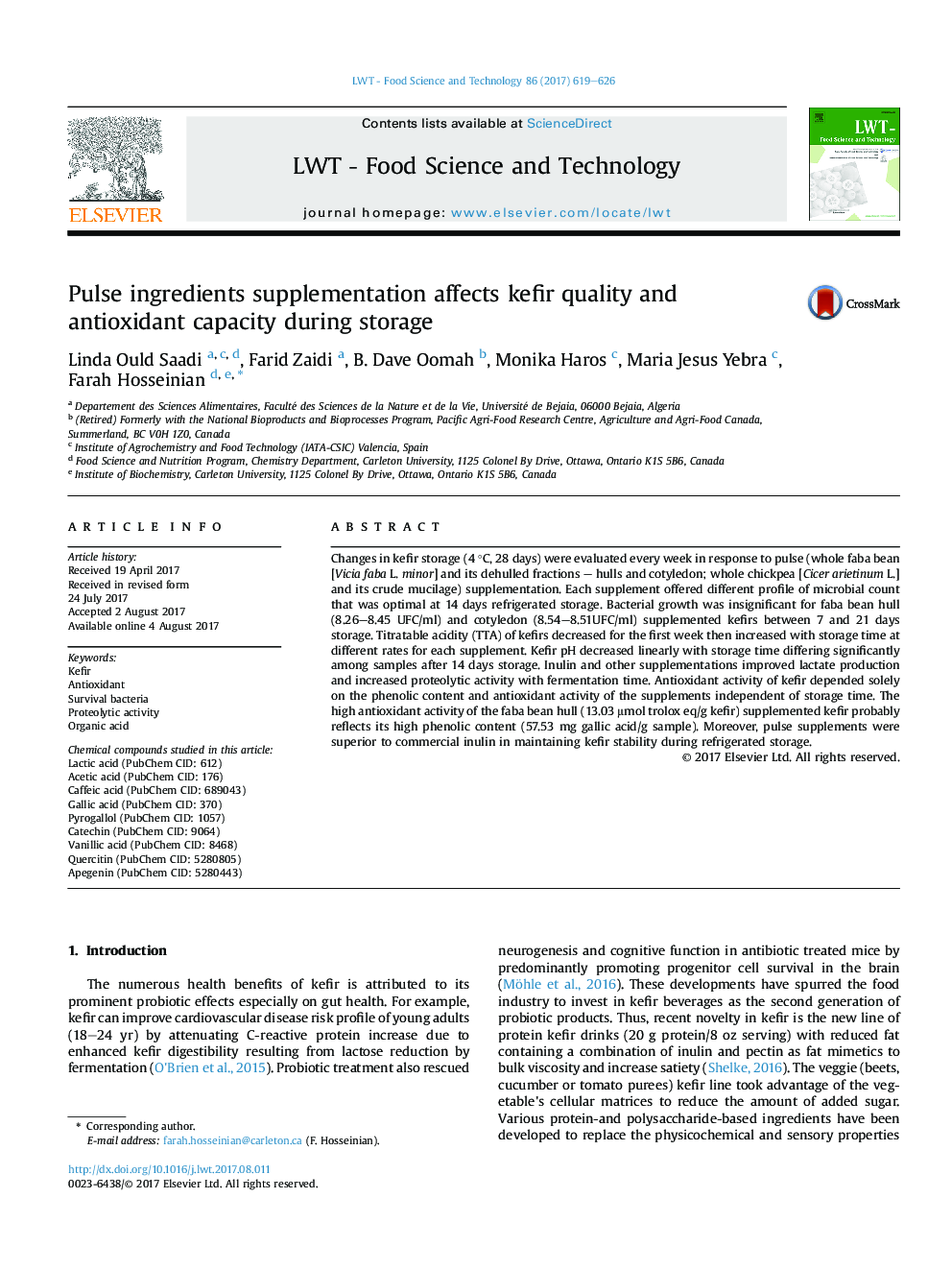| کد مقاله | کد نشریه | سال انتشار | مقاله انگلیسی | نسخه تمام متن |
|---|---|---|---|---|
| 5768729 | 1628513 | 2017 | 8 صفحه PDF | دانلود رایگان |
- Pulses-kefir (fermentation model) has limited research and was successfully employed.
- SCF are intermediate products of dietary fibre that can be used as their biomarkers.
- Dietary fibre can carry/release phenolics during fermentation, enhancing antioxidant activity.
- Kefir is an excellent vehicle to deliver pulse by-products ingredient, reducing agri-food waste.
- This study provided excellent foundation for future research.
Changes in kefir storage (4 °C, 28 days) were evaluated every week in response to pulse (whole faba bean [Vicia faba L. minor] and its dehulled fractions - hulls and cotyledon; whole chickpea [Cicer arietinum L.] and its crude mucilage) supplementation. Each supplement offered different profile of microbial count that was optimal at 14 days refrigerated storage. Bacterial growth was insignificant for faba bean hull (8.26-8.45 UFC/ml) and cotyledon (8.54-8.51UFC/ml) supplemented kefirs between 7 and 21 days storage. Titratable acidity (TTA) of kefirs decreased for the first week then increased with storage time at different rates for each supplement. Kefir pH decreased linearly with storage time differing significantly among samples after 14 days storage. Inulin and other supplementations improved lactate production and increased proteolytic activity with fermentation time. Antioxidant activity of kefir depended solely on the phenolic content and antioxidant activity of the supplements independent of storage time. The high antioxidant activity of the faba bean hull (13.03 μmol trolox eq/g kefir) supplemented kefir probably reflects its high phenolic content (57.53 mg gallic acid/g sample). Moreover, pulse supplements were superior to commercial inulin in maintaining kefir stability during refrigerated storage.
Journal: LWT - Food Science and Technology - Volume 86, December 2017, Pages 619-626
